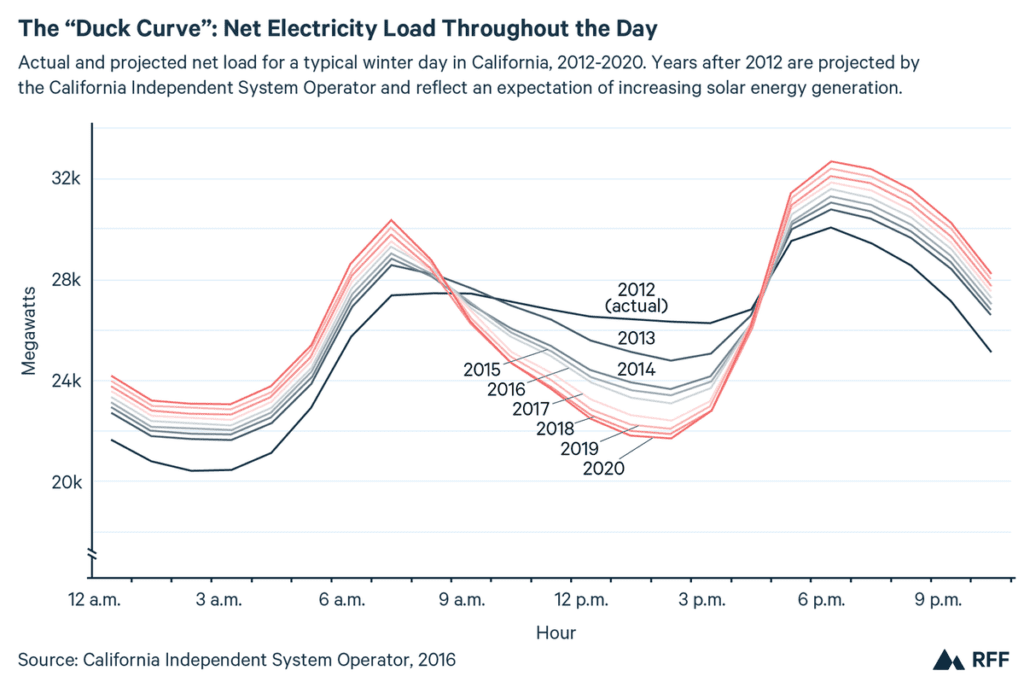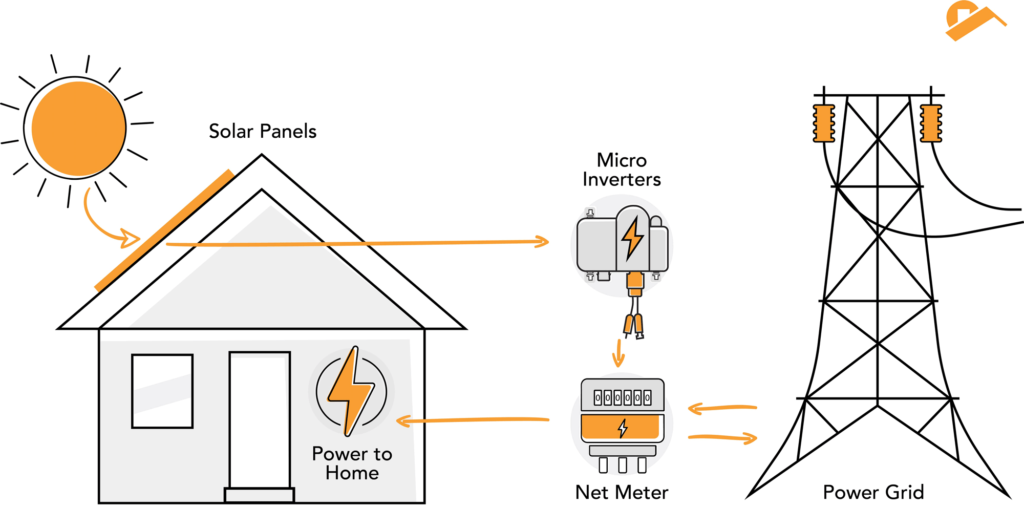Estimated reading time: 5 minutes
Net metering is a common buzzword in the solar industry that very few consumers actually understand.
In short, net metering is the credit your utility company gives you for the solar power you don’t immediately use at your own house/property.
1. How It Works
2. Important Differences Between Net Metering, Feed-in Tariffs, and Net Billing
3. Issues With Net Metering
4. Design With Net Metering in Mind
How It Works
Your system generates most of its power in the middle of the day, generally in a 4-6 hour window (10 a.m.-4 p.m.). This window is often wider in the summer and narrower in the winter.
Unfortunately, most people’s energy needs don’t fall exclusively in this time window. Therefore, they need a way to store the energy they are generating for later in the day/night.

The grid (power companies) usually offer a simple and affordable solution for this “storage” problem called net metering. In many cases, net metering is a better option than battery storage.
The power your solar generates will be used immediately by your home’s power demand, but any excess will be routed back to the grid for the power company to sell to other people.

Often, power companies will then give you a credit. This credit can be a fixed price per kWh OR it can be a 1-for-1 credit. This means you will be allowed to later use the same amount of kWh that is sent to the grid (just like a battery but without efficiency loss).
Important Differences Between Net Metering, Feed-In Tariffs, and Net Billing
Often “net metering” is used as a blanket term to describe various energy agreements between solar customers and utility companies. Here, we will briefly go over these differences.
Across the country, most states and utility companies have implemented versions of net metering, feed-in tariffs (FITs), and/or net billing.
Feed-In Tariffs
A systematic difference between net metering schemes and FITs is that net metering uses a single, bi-directional meter to measure the energy generation and consumption of a household. FITs, on the other hand, require a solar system to have two meters since generation and consumption are measured separately.

Both generation and consumption are measured because solar owners are paid a certain amount per unit of electricity sent to the grid, and that amount is typically locked in over a 10 to 20-year contract.
Instead of getting a kWh’s worth of credit for every kWh produced (like with net metering), FIT customers receive a monetary credit that corresponds to the value of the energy, which can end up being higher or lower than the energy’s retail price.
Net metering is more widespread than FITs, which are currently only offered by select states and utility companies.
You can look at offerings in your location through the Database of State Incentives for Renewables & Efficiency.
Net Billing
Net billing is another alternative to net metering that has been officially implemented by a couple country. Net billing differs from net metering because it uses one rate to value the excess energy that is sent to the grid and another rate for the energy that is drawn from the grid.
Consumption and generation are billed separately with net billing, and there is also a minimum charge at the beginning of each cycle (like with net metering).
Net billing allows solar customers to generate electricity for personal use, sell any excess energy to the utility company at wholesale prices, and then purchase power at the retail rate.

Although net billing is sometimes categorized as net metering, it is technically different, since excess generation is no longer netted one-to-one against consumption over a billing period.
It is also important to be aware that whether your utility company follows net metering or net billing can also depend on the size of your solar system.
In summary, net metering is at the retail rate, which is not technically compensation, but customers can benefit if their utility company allows excess generation rollover. Feed-in tariffs (FITs) can pay customers above or under retail rates for excess generation, and net billing charges customers the retail rate to pull electricity from the grid and pays customers less than the retail rate for exported generation.
Since these programs can differ significantly, it is important to know what your utility company or ountry will offer as you plan and size your solar system.
Issues With Net Metering
Utility companies are often required to hit certain renewable quotas, making the net metering program a win-win. In some cases, these utility companies will even incentivize you to install solar, giving you a kickback/incentive off the purchase price to do so.
On the flip side, some utility companies’ and country’ aggressive time-of-use rates complicate fair net metering terms and essentially give you a fraction of the value back compared to what you pay at night.

You essentially sell your excess power back to the utility company at wholesale prices and then pay retail rates when you need it back.
This is rarely a deal breaker. For most areas with low net metering credits, the ROI is still upwards of 15%. Solar will often bring you down into the lowest pricing tier, making the retail rate you pay significantly lower than the retail rate you previously paid. Also, batteries can help spread out the time of use for the power you are generating.
Design With Net Metering in Mind
It is important to know your local utility company’s net metering policy. This can impact the value of your system over the long run. Even the worst utility companies don’t stop solar from being a fantastic investment, but it could influence your total system design.
For example, it’s generally accepted that south-facing panel roof placement is the best for maximizing efficiency. However, those with harsh net metering terms may want to opt to maximize their system by having it face west so that when the majority of their power is generated in the late afternoon, they are home from work using their evening power.
At Solar-com, our expert designers know how to work with you to design and optimize your system. This service is included, even in our DIY package.

